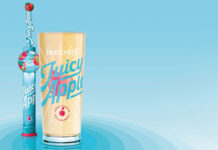Scottish trade staple shows premium potential, say drinks firms
DESPITE another strong year for the likes of gin and craft beer, which continue to move from strength to strength, vodka remains a trade staple; it’s the biggest selling spirit in Scotland, holding a 34% share of all spirits sold in the Scottish on-trade, according to figures quoted by Diageo.
Yet there are a couple of ways publicans can push their vodka sales further, drinks firms told SLTN.

In recent years the range of vodkas available to bars has grown exponentially, with the options now “almost as vast as its versatility”, according to Tina Connolly of Halewood Wines & Spirits.
The firm counts vodka brand Red Square in its stable and Connolly said that “the health of the premium spirits category is really driving this growth, particularly in the expanding premium bar and clubs sector”.
“The premiumisation trend shows no signs of slowing, as drinkers see a night out as an opportunity to trade-up and enjoy a new experience,” said Connolly.
“It’s not only trendy bars and clubs that are seeing this up-take but also lavish hotels and restaurant bars too.”
The growing trend of premium spirits was supported by Adam Boita, head of marketing at Pernod Ricard UK, the firm behind Absolut Vodka.
He said: “Premium spirits are an exciting opportunity in the UK and vodka continues to be the most popular spirit in the on-trade in terms of volume due to its versatility.”
And it’s this versatility that is ensuring vodka’s growing popularity as an ingredient in cocktails, according to Steve Howard, managing director of Stock International, the firm behind flavoured vodka brand Keglevich.
“The gin sector in the on-trade has reached saturation point, and many leading figures in the trade are indicating there is a gap in the market for the growth of premium and distinct vodka offerings,” said Howard.
And as a primary ingredient in cocktails, Howard reckons vodka has “huge scope for renewed interest in the cocktail market at both the top end and the more accessible part of the market”.
Boita of Pernod Ricard took a similar stance and argued that operators should ensure they have a good range of basic and more luxury vodka cocktails in the approach to Christmas.
“Outlets should ensure that they have a mixture of classic and more complex vodka serves on their cocktail menus, particularly at this time of year when festive on-trade drinkers increasingly treat themselves, experiment and trade-up over Christmas,” said Boita.
He advised operators to consider “offering a point of difference”, such as themed drinking vessels, to encourage customers to trade up to more premium vodka serves.
But premium vodka goes beyond Christmas, and operators would do well to ensure they follow two key ‘indicators’, according to Boita.
The first indicator is quality, said Boita, with the second being provenance.
He claimed that vodka, as a general rule, is classed as either new or old world; new world vodkas are more neutral, whereas old world vodkas are “more sophisticated with a textured feel in the mouth”.
He added that flavoured vodkas should not be forgotten, as they can be utilised in a range of different cocktails.
And brands with a similar provenance should be grouped together on the back-bar, advised Sarah Browne of Diageo.
She said: “Your back-bar is essentially your shop window, so use this space wisely and effectively.
“Spirits should be grouped together and displayed in an inspiring and highly visible way.”

























